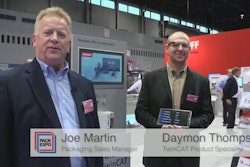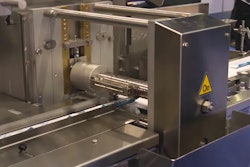The overriding problem resided in [the food manufacturer's] legacy equipment for the packaging lines, but the challenge was identifying the specific equipment bottlenecks and the investment needed to fix them. Burns & McDonnell, a Kansas City, MO-based design and engineering firm, was bought in to help. They simulated the existing packaging line operations using Rockwell Automation's Arena software. Arena simulation uses what-if, deterministic modeling with single-point estimates; uncertain variables in the packaging line are assigned a "best guess" estimate.
Using existing production data, Burns & McDonnell simulated these three packaging lines and discovered that some equipment was underperforming. Burns & McDonnell captured overall plant capacity, production schedules, equipment reliability data, and equipment rates and capacities to create the simulated line.
According to Burns & McDonnell, production data was then used to build a range for each piece of packaging equipment. "The simulation software accurately modeled 150 days of plant floor output, which was compared against six months of historical plan-floor data," says Abbey Hatke, industrial engineer for Burns & McDonnell. "These results included both equipment reliability and line reliability, and were within 0.25 percent of each other-confirming that our team had created a realistic plant environment in which to test its simulations."


























